Results
-
 £32.95
£32.95CAROUSEL, The (Soprano Cornet or Tenor Horn/Brass Band) - Newsome, Roy
Soprano Cornet or Tenor Horn Solo & Brass Band. A separate Piano Accompaniment edition is also available. Solo UK Grade 7
Estimated dispatch 7-14 working days
-
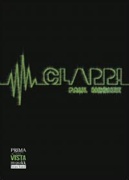 £34.95
£34.95CLAPP! (Brass Band) - McGhee, Paul
Clapp! was originally written in 2006 whilst studying at the Royal Welsh College of Music and Drama and was written for two players at one piano. The music uses rhythmic phasing with each rhythm assigned its own tone cluster - as each shift in rhythm occurs the harmonic structure is altered too. Melodic passages are created through the shifts in rhythm and harmony, but these only occur within the given rhythmic parameters. The music can very much be viewed as a study in momentum, with its unrelenting pulse driving us through the music.The Brass Band version of 'Clapp!!!!' was written for Manger Musikklag and Torstein Aagaard-Nilsen, receiving its premiere at the 2010 BrassWind Festival in Bergen, Norway.Duration: 3:30
Estimated dispatch 7-14 working days
-
 £25.00
£25.00CONCERTINO IN E FLAT (Soprano Cornet/Brass Band) - Barry, Darrol
Soprano Cornet & Brass Band. Also available with Piano accompaniment
Estimated dispatch 7-14 working days
-
 £37.95
£37.95CONCERTO FOR HORN IN E FLAT (Tenor Horn/Brass Band) - Bellini, Vincenzo - Newsome, Roy
Tenor Horn Solo & Brass Band. A separate Piano Accompaniment edition is also available. Solo UK Grade 8
Estimated dispatch 7-14 working days
-
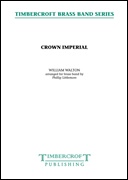 £45.00
£45.00Crown Imperial, March (Brass Band - Score and Parts) - Walton, William - Littlemore, Phillip
William Walton composed his Crown Imperial for performance at the coronation of King Edward VIII, which was scheduled for the 12th May 1937. However, due to the dramatic abdication of Edward, it was in fact performed at the Coronation of the new monarch, King George VI, which took place on the same scheduled date. The march became popular immediately, and arrangements for piano solo, organ, small orchestra and military band were all published within a year. It has been used at all Royal events since, most notably the Coronation of Queen Elizabeth II in 1953. This new brass band transcription?is in keeping with the shorter, 6-minute concert version that Walton created immediately following the Coronation of George VI. However, the scoring is more in keeping with contemporary brass band voicings, and provides an exciting version for brass band.?Duration: 7:00
Estimated dispatch 7-14 working days
-
 £27.95
£27.95DEMELZA (Soprano Cornet/Brass Band) - Nash, Hugh
Soprano Cornet & Brass Band. Also available with Piano accompaniment
Estimated dispatch 7-14 working days
-
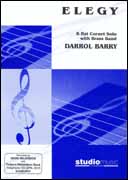 £42.95
£42.95ELEGY (Cornet/Brass Band) - Barry, Darrol
Recorded by Mark Wilkinson with Foden's Richardson Band on Polyphonic CD QPRL221D Sunburst Also available: B flat Cornet (or Trumpet) and Piano edition.
Estimated dispatch 7-14 working days
-
 £42.95
£42.95ESCAPOLOGY (Baritone/Brass Band) - Davoren, Tom
Baritone Solo with Brass Band. Also Available: Baritone Solo with Piano edition.
Estimated dispatch 7-14 working days
-
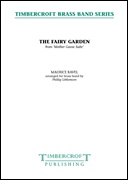 £35.00
£35.00Fairy Garden, The (from Mother Goose Suite) (Brass Band - Score and Parts) - Ravel, Maurice - Littlemore, Phillip
Ravel wrote his five short piano pieces entitled?Ma M?re l'Oye?(Mother Goose) for two young children, Mimie and Jean Godeski in 1910. The suite invites us to the enchanted world of childhood through these five atmospheric tales. The final part of Ravel's suite is a grand finale, although where Ravel got his inspiration for the fairy garden is unknown. Whatever its origin, it certainly is a delightful piece of music - slow in tempo, quiet to start, with rich harmonies and delicate solos, all leading to a tumultuous climax.?Duration: 3:00
Estimated dispatch 7-14 working days
-
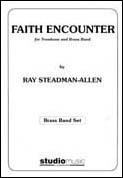 £49.95
£49.95FAITH ENCOUNTER (Trombone/Brass Band) - Steadman-Allen, Ray
for Trombone & Brass Band. An edition with piano accompaniment is available separately. Recorded by Brett Baker with the Boscombe Band of the Salvation Army on Polpyhonic CD QPRL223D Faith Encounter.
Estimated dispatch 7-14 working days
